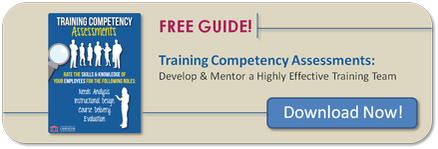Photo by: Michail_Petrov-96 via Canva
Here are two conversations relating to how training projects can be prioritized. They are fictional. The names of the participants and the projects are imaginary. Our conversers are Tam the Training Manager (TTM) and Stella the Sales Manager (SSM).
Conversation 1
SSM: Hey Tam. I thought I’d stop by to talk about that new project I emailed you about.
TTM: Oh hi, Stella. Sure thing. Come on in.
SSM: So, our new TPS report procedures will be finalized next month. It looks like all my salespeople will need training on them.
TTM: Okay, so the deadline for delivery is 30 days. Do you still have about 150 people across all regions?
SSM: That’s right. It shouldn’t take more than an hour to deliver this training, so we can get everyone trained within a week of the new procedure launch.
TTM: Hmm, looking at my available resources, I’m not sure I can meet those deadlines.
SSM: This is priority one, Tam. It’s got to happen.
TTM: But, what about that consultative sales course you want delivered by end-of-year?
SSM: Oh, that’s still priority one as well.
TTM: I also have a project going for Chris in customer service about the new product launch.
SSM: Oh yeah, I don’t want to override Chris. That’s also priority one.
Let’s give Tam a new prioritizing tool—using organizational objectives—and go back in time.
Conversation 2
SSM: Hey Tam. I thought I’d stop by to talk about that new project I e-mailed you about.
TTM: Oh hi, Stella. Sure thing. Come on in.
SSM: So, our new TPS report procedures will be finalized next month. It looks like all my salespeople will need training on them.
TTM: Okay, so the deadline for delivery is 30 days. Do you still have about 150 people across all regions?
SSM: That’s right. It shouldn’t take more than an hour to deliver this training, so we can get everyone trained within a week of the new procedure launch.
TTM: Hmm, looking at the strategic plan, I’m trying to decide which organizational objective this project relates to.
SSM: Strategic plan?
TTM: Yes. Here, have a look. Would you say this relates to the objective about reducing costs by 5% this year?
SSM: Well, yeah. That’s the whole reason we redid the TPS reports in the first place.
TTM: So, it fits between the new product launch and the push to increase new customer business.
SSM: Makes sense.
TTM: So, Chris’ new product launch training would be priority one. This TPS report course looks like priority two. And the consultative sales course we’re working on now becomes priority three.
SSM: Yes, that order of priority seems to work.
I’m not suggesting that all competing projects can be easily resolved using a list of organizational objectives, but it does help to keep the discussion rational and unbiased. It also allows training professionals to manage client expectations in a realistic way. Let your client see a list of prioritized organizational objectives and relate the new project to one of them. This will help you and your client set deadlines and allocate resources in a way that addresses the needs of all stakeholders across all projects.
How are training projects typically prioritized in your organization?
Aligning training with organizational goals is just one topic covered in The Successful Training Manager workshop. With the numerous tools and resources in this workshop, you’ll be equipped to manage every aspect of the training function.


